The NYT reversed itself to the official narrative of categorically dismissing reports of deadly effects of radiation in articles by a Times correspondent who was being paid by the government, report Amy and David Goodman.
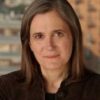
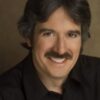 At the dawn of the nuclear age, an independent Australian journalist named Wilfred Burchett traveled to Japan to cover the aftermath of the atomic bombing of Hiroshima. The only problem was that General Douglas MacArthur had declared southern Japan off-limits, barring the press. Over 200,000 people died in the atomic bombings of Hiroshima and Nagasaki, but no Western journalist witnessed the aftermath and told the story. The world’s media obediently crowded onto the USS Missouri off the coast of Japan to cover the surrender of the Japanese.
At the dawn of the nuclear age, an independent Australian journalist named Wilfred Burchett traveled to Japan to cover the aftermath of the atomic bombing of Hiroshima. The only problem was that General Douglas MacArthur had declared southern Japan off-limits, barring the press. Over 200,000 people died in the atomic bombings of Hiroshima and Nagasaki, but no Western journalist witnessed the aftermath and told the story. The world’s media obediently crowded onto the USS Missouri off the coast of Japan to cover the surrender of the Japanese.
Wilfred Burchett decided to strike out on his own. He was determined to see for himself what this nuclear bomb had done, to understand what this vaunted new weapon was all about. So he boarded a train and traveled for thirty hours to the city of Hiroshima in defiance of Gen. MacArthur’s orders.
Burchett emerged from the train into a nightmare world. The devastation that confronted him was unlike any he had ever seen during the war. The city of Hiroshima, with a population of 350,000, had been razed. Multistory buildings were reduced to charred posts. He saw people’s shadows seared into walls and sidewalks. He met people with their skin melting off. In the hospital, he saw patients with purple skin hemorrhages, gangrene, fever, and rapid hair loss. Burchett was among the first to witness and describe radiation sickness.
Burchett sat down on a chunk of rubble with his Baby Hermes typewriter. His dispatch began:
“In Hiroshima, thirty days after the first atomic bomb destroyed the city and shook the world, people are still dying, mysteriously and horribly-people who were uninjured in the cataclysm from an unknown something which I can only describe as the atomic plague.”
He continued, tapping out the words that still haunt to this day:
“Hiroshima does not look like a bombed city. It looks as if a monster steamroller has passed over it and squashed it out of existence. I write these facts as dispassionately as I can in the hope that they will act as a warning to the world.”
Burchett’s article, headlined THE ATOMIC PLAGUE, was published on Sept. 5, 1945, in the London Daily Express. The story caused a worldwide sensation. Burchett’s candid reaction to the horror shocked readers.
“In this first testing ground of the atomic bomb I have seen the most terrible and frightening desolation in four years of war. It makes a blitzed Pacific island seem like an Eden. The damage is far greater than photographs can show.
When you arrive in Hiroshima you can look around for twenty-five and perhaps thirty square miles. You can see hardly a building. It gives you an empty feeling in the stomach to see such man-made destruction.”
Burchett’s searing independent reportage was a public relations fiasco for the U.S. military. General Douglas MacArthur had gone to pains to restrict journalists’ access to the bombed cities, and his military censors were sanitizing and even killing dispatches that described the horror. The official narrative of the atomic bombings downplayed civilian casualties and categorically dismissed reports of the deadly lingering effects of radiation.
Reporters whose dispatches conflicted with this version of events found themselves silenced: George Weller of the Chicago Daily News slipped into Nagasaki and wrote a 25,000-word story on the nightmare that he found there. Then he made a crucial error: He submitted the piece to military censors. His newspaper never even received his story. As Weller later summarized his experience with MacArthur’s censors, “They won.”
Kill the Messenger
U.S. authorities responded in time-honored fashion to Burchett’s revelations: They attacked the messenger. Gen. MacArthur ordered him expelled from Japan (the order was later rescinded), and his camera with photos of Hiroshima mysteriously vanished while he was in the hospital. U.S. officials accused Burchett of being influenced by Japanese propaganda. They scoffed at the notion of an atomic sickness. The U.S. military issued a press release right after the Hiroshima bombing that downplayed human casualties, instead emphasizing that the bombed area was the site of valuable industrial and military targets.
Four days after Burchett’s story splashed across front pages around the world, U.S. Major General Leslie R. Groves, director of the atomic bomb project, invited a select group of thirty reporters to New Mexico. Foremost among this group was William L. Laurence, the Pulitzer Prize-winning science reporter for The New York Times. Groves took the reporters to the site of the first atomic test. His intent was to demonstrate that no atomic radiation lingered at the site. Groves trusted Laurence to convey the military’s line; the general was not disappointed.
Laurence’s front-page story, “U.S. ATOM BOMB SITE BELIES TOKYO TALES: TESTS ON NEW MEXICO RANGE CONFIRM THAT BLAST, AND NOT RADIATION, TOOK TOLL,” ran on Sept. 12, 1945, following a three-day delay to clear military censors.
“This historic ground in New Mexico, scene of the first atomic explosion on earth and cradle of a new era in civilization, gave the most effective answer today to Japanese propaganda that radiations [sic] were responsible for deaths even after the day of the explosion, Aug. 6, and that persons entering Hiroshima had contracted mysterious maladies due to persistent radioactivity,” the article began. Laurence said unapologetically that the Army tour was intended “to give the lie to these claims.”
Laurence quoted Gen. Groves: “The Japanese claim that people died from radiation. If this is true, the number was very small.”
Laurence then went on to offer his own remarkable editorial on what happened:
“The Japanese are still continuing their propaganda aimed at creating the impression that we won the war unfairly, and thus attempting to create sympathy for themselves and milder terms . . . Thus, at the beginning, the Japanese described ‘symptoms’ that did not ring true.”
But Laurence knew better. He had observed the first atomic bomb test on July 16, 1945, and he withheld what he knew about radioactive fallout across the southwestern desert that poisoned local residents and livestock. He kept mum about the spiking Geiger counters all around the test site.
William L. Laurence went on to write a series of ten articles for the Times that served as a glowing tribute to the ingenuity and technical achievements of the nuclear program. Throughout these and other reports, he downplayed and denied the human impact of the bombing. Laurence won the Pulitzer Prize for his reporting.
On Government Payroll
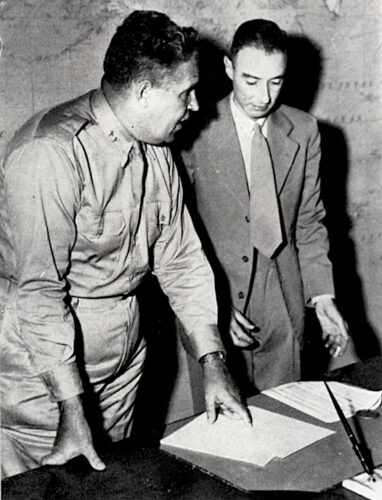
General Leslie Groves (left), military head of the Manhattan Project, with Professor Robert Oppenheimer (right). (U.S. Army)
It turns out that William L. Laurence was not only receiving a salary from The New York Times. He was also on the payroll of the War Department. In March 1945, Gen. Leslie Groves had held a secret meeting at The New York Times with Laurence to offer him a job writing press releases for the Manhattan Project, the U.S. program to develop atomic weapons. The intent, according to the Times, was “to explain the intricacies of the atomic bomb’s operating principles in laymen’s language.” Laurence also helped write statements on the bomb for President Truman and Secretary of War Henry Stimson.
Laurence eagerly accepted the offer, “his scientific curiosity and patriotic zeal perhaps blinding him to the notion that he was at the same time compromising his journalistic independence,” as essayist Harold Evans wrote in a history of war reporting. Evans recounted:
“After the bombing, the brilliant but bullying Groves continually suppressed or distorted the effects of radiation. He dismissed reports of Japanese deaths as ‘hoax or propaganda.’ The Times‘ Laurence weighed in, too, after Burchett’s reports, and parroted the government line.”
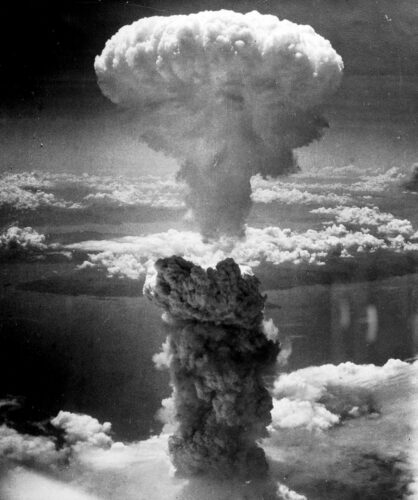
Photo of Nagasaki bombing taken by Charles Levy from one of the B-29 Superfortresses used in the attack. (Office of War Information.)
Indeed, numerous press releases issued by the military after the Hiroshima bombing–which in the absence of eyewitness accounts were often reproduced verbatim by U.S. newspapers–were written by none other than Laurence.
“Mine has been the honor, unique in the history of journalism, of preparing the War Department’s official press release for worldwide distribution,” boasted Laurence in his memoirs, Dawn Over Zero. “No greater honor could have come to any newspaperman, or anyone else for that matter.”
“Atomic Bill” Laurence revered atomic weapons. He had been crusading for an American nuclear program in articles as far back as 1929. His dual status as government agent and reporter earned him an unprecedented level of access to American military officials-he even flew in the squadron of planes that dropped the atomic bomb on Nagasaki. His reports on the atomic bomb and its use had a hagiographic tone, laced with descriptions that conveyed almost religious awe.
In Laurence’s article about the bombing of Nagasaki (it was withheld by military censors until a month after the bombing), he described the detonation over Nagasaki that incinerated 100,000 people. Laurence waxed:
“Awe-struck, we watched it shoot upward like a meteor coming from the earth instead of from outer space, becoming ever more alive as it climbed skyward through the white clouds. . . . It was a living thing, a new species of being, born right before our incredulous eyes.”
Laurence later recounted his impressions of the atomic bomb:
“Being close to it and watching it as it was being fashioned into a living thing, so exquisitely shaped that any sculptor would be proud to have created it, one . . . felt oneself in the presence of the supranatural.”
Laurence was good at keeping his master’s secrets-from suppressing the reports of deadly radioactivity in New Mexico to denying them in Japan. The Times was also good at keeping secrets, only revealing Laurence’s dual status as government spokesman and reporter on August 7, the day after the Hiroshima bombing-and four months after Laurence began working for the Pentagon. As Robert Jay Lifton and Greg Mitchell wrote in their excellent book Hiroshima in America: Fifty Years of Denial, “Here was the nation’s leading science reporter, severely compromised, not only unable but disinclined to reveal all he knew about the potential hazards of the most important scientific discovery of his time.”
A Different Lawrence—Radiation: Now You See It, Now You Don’t
A curious twist to this story concerns another New York Times journalist who reported on Hiroshima; his name, believe it or not, was William Lawrence (his byline was W.H. Lawrence). He has long been confused with William L. Laurence. (Even Wilfred Burchett confuses the two men in his memoirs and his 1983 book, Shadows of Hiroshima.) Unlike the War Department’s Pulitzer Prize winner, W.H. Lawrence visited and reported on Hiroshima on the same day as Burchett. (William L. Laurence, after flying in the squadron of planes that bombed Nagasaki, was subsequently called back to the United States by the Times and did not visit the bombed cities.)

Lawrence’s Sept. 5, 1945 front page story: ‘Visit to Hiroshima Proves It World’s Most-Damaged City.’
W.H. Lawrence’s original dispatch from Hiroshima was published on Sept. 5, 1945. He reported matter-of-factly about the deadly effects of radiation, and wrote that Japanese doctors worried that “all who had been in Hiroshima that day would die as a result of the bomb’s lingering effects.” He described how “persons who had been only slightly injured on the day of the blast lost 86 percent of their white blood corpuscles, developed temperatures of 104 degrees Fahrenheit, their hair began to drop out, they lost their appetites, vomited blood and finally died.”
Oddly enough, W.H. Lawrence contradicted himself one week later in an article headlined, “NO RADIOACTIVITY IN HIROSHIMA RUIN.” For this article, the Pentagon’s spin machine had swung into high gear in response to Burchett’s horrifying account of “atomic plague.” W.H. Lawrence reported that Brigadier General T. F. Farrell, chief of the War Department’s atomic bomb mission to Hiroshima, “denied categorically that [the bomb] produced a dangerous, lingering radioactivity.” Lawrence’s dispatch quotes only Farrell; the reporter never mentions his eyewitness account of people dying from radiation sickness that he wrote the previous week.
The conflicting accounts of Wilfred Burchett and William L. Laurence might be ancient history were it not for a modern twist. On Oct. 23, 2003, The New York Times published an article about a controversy over a Pulitzer Prize awarded in 1932 to Times reporter Walter Duranty. A former correspondent in the Soviet Union, Duranty had denied the existence of a famine that had killed millions of Ukrainians in 1932 and 1933.
The Pulitzer Board had launched two inquiries to consider stripping Duranty of his prize. The Times “regretted the lapses” of its reporter and had published a signed editorial saying that Duranty’s work was “some of the worst reporting to appear in this newspaper.” Current Times executive editor Bill Keller decried Duranty’s “credulous, uncritical parroting of propaganda.”
On Nov. 21, 2003, the Pulitzer Board decided against rescinding Duranty’s award, concluding that there was “no clear and convincing evidence of deliberate deception” in the articles that won the prize.
As an apologist for Joseph Stalin, Duranty is easy pickings. What about the “deliberate deception” of William L. Laurence in denying the lethal effects of radioactivity? And what of the fact that the Pulitzer Board knowingly awarded the top journalism prize to the Pentagon’s paid publicist, who denied the suffering of millions of Japanese? Do the Pulitzer Board and the Times approve of “uncritical parroting of propaganda”-as long as it is from the United States?
It is long overdue that the prize for Hiroshima’s apologist be stripped.
This article was originally published on Common Dreams on Aug. 10, 2004 and is republished under a Creative Commons license.
Amy Goodman is the host of “Democracy Now!,” a daily international TV/radio news hour airing on 1,100 stations in North America. She was awarded the 2008 Right Livelihood Award, dubbed the “Alternative Nobel” prize, and received the award in the Swedish Parliament in December.
David Goodman, a contributing writer for Mother Jones, is the co-author with his sister Amy Goodman of “The Exception to the Rulers: Exposing Oily Politicians, War Profiteers, and the Media That Love Them.”
The views expressed are solely those of the author and may or may not reflect those of Consortium News.
Please Contribute to Consortium News’ on its 25th Anniversary
Donate securely with  PayPal here.
PayPal here.
Or securely by credit card or check by clicking the red button:


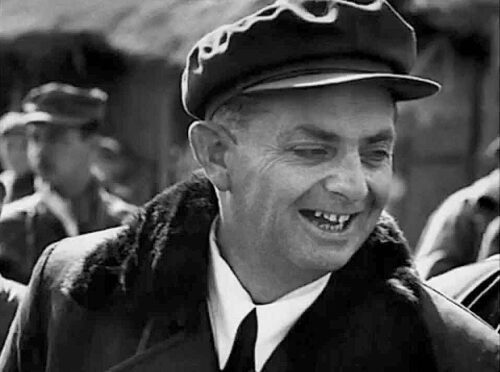
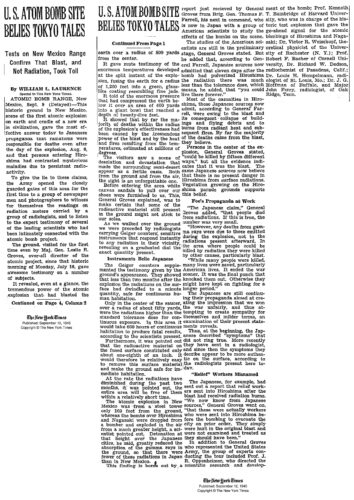
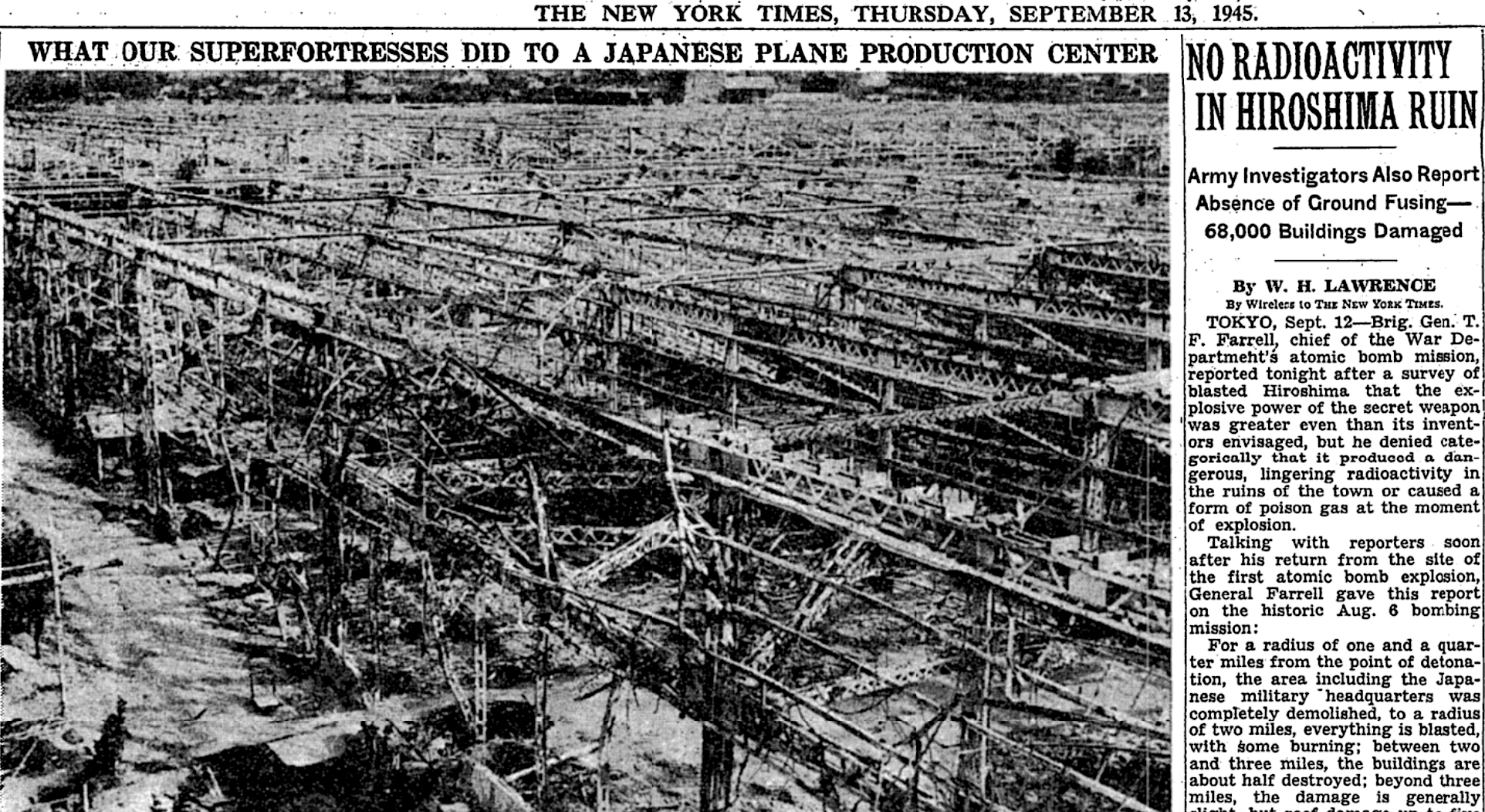
Did the lack of free speech in the US and Japan in 1945 (and now) explain the tragedy at Hiroshima and Nagasaki?
If the American public has known that Japan wanted to surrender, the propaganda that ‘the bomb’ would save the lives of US troops would have been exposed as propaganda or just plain wrong.
Had the the people of Japan known their government was prolonging the war and slaughter to save the foolishness of monarchy, would they have sacrificed their children and society to preserve the foolishness of divine monarchy? The foolishness of the Japanese government in no way justifies the fires that consumed Hiroshima and Nagasaki.
Air Power ( including missiles) is the ultimate technological Grim Reaper. It has not shorted war as its advocates claim. It has increased the slaughter and devastation.
Truman’s grandson is still covering up for his mass-murdering grandfather:
hXXps://www.theguardian.com/world/2020/aug/04/harry-truman-grandson-hiroshima-nuclear-atom-bomb
The story alludes to, but quickly drops, a critic’s charge that the bomb was dropped as Japan was trying to surrender,
putting the lie to the propaganda claim that Truman’s intent was to shorten the war and save American soldiers’ lives.
Was the Guardian just sloppy in 2020, or simply aping the leading U.S. liberal paper?
I think the last paragraph citing William L. Laurence and NOT W.H. Laurence “deliberate deception” is very confusing. If I read this article correctly it is W.H. (not L.) who was guilty of deliberate deception. Does C.N. want to correct this?
Both Laurence and Lawrence were guilty of deception. At least Lawrence got it right the first time.
Sven Lindqvist has written a fascinating book called “A History of Bombing” which links many historical facts with literature of the times and his own experience (he was born in 1932 in Sweden and travelled extensively just after WW2 ended in countries closely involved).
When one thinks of war crimes, crimes against humanity and crimes of lèse humanité the Nazis are generally in the forefront of the discussion because of the Holocaust. However, did anyone in the history of the world kill more human beings in one day, two days, a week, a month than did the United States under Harry S Truman? Either the Nazis are not as bad as advertised or we were much worse. Something to think about as we ponder reparations to the descendants of former slaves.
As I recall, the NYT was an advocate for the “Weapons of Mass Destruction (in Iraq)” lie that was forged by the Bush-Cheney administration. Perhaps that disgraceful performance explains why the mainstream media is distrusted by so many people.
Can’t disagree with what the article says, but condemning the “uncritical parroting of propaganda” is pretty rich, coming from Amy Goodman, who is guilty of exactly the same “parroting” in the case of “Russiagate”.
If I may quote the great Ray McGovern: “Sadly, on ‘Russiagate’ there is not much difference between Amy Goodman and Rachel Maddow – the virulent HWHW still at work (Hillary Would Have Won).”
It takes no courage to take a stand against propaganda of 75 years ago; it takes huge courage to speak out against today’s propaganda. This is what separates the Amy Goodmans and Ray McGoverns of this world.
This article was written in 2004.
Dear CN – you are something of a lifeline in an otherwise Orwellian world. But Nowhere in this article or around it (that I can see, so the problem may be mine) is it made clear that it originally came out in 2004…well before the Russiagate garbage. I had assumed – given the Beeb’s “timely” ten minute look backs at historical moments (we are presently being whitewashed about the entry into WWII by the USA,. its causes and the effects of Hiroshima/Nagasaki on the populations therein) – that this article by the Goodmans had been written and published within the last week or so. Not some 16 years ago. Not that that makes less relevant, mind; in fact one could well argue that it is more relevant than ever. BUT why not the original date? Usually you provide that…
AnneR: The date is provided at the end of the article: August 10, 2004.
This is hell and we created it…
The more things change, the more they stay the same…